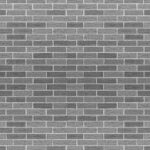
In the realm of laboratory equipment, the vacuum desiccator cabinet stands as an indispensable tool for preserving and protecting sensitive materials from moisture and humidity. Whether you are working in a research laboratory, a pharmaceutical facility, or any other scientific setting, selecting the right vacuum desiccator cabinet is crucial to maintaining the integrity of your samples and experiments. Cleatech LLC, a leading manufacturer of laboratory equipment, is here to guide you through the key considerations for choosing the ideal vacuum desiccator cabinet that aligns with your specific laboratory needs.
Material and Build Quality
The first and foremost consideration when choosing a vacuum desiccator cabinet is the material and build quality. These cabinets come in various materials, including clear acrylic, polycarbonate, and stainless steel. Your choice should be driven by the type of experiments you conduct and the chemicals involved. Here’s a breakdown:
Clear Acrylic: Ideal for general-purpose applications, clear acrylic desiccators offer excellent visibility of the contents inside. They are lightweight and cost-effective but may not be suitable for chemical-resistant requirements.
Polycarbonate: Polycarbonate desiccators provide better chemical resistance compared to acrylic. They are more durable and can withstand a wider range of chemicals. However, they may not be as visually clear as acrylic.
Stainless Steel: Stainless steel desiccators are the most robust and chemical-resistant option. They are suitable for applications involving highly corrosive chemicals. While they may not offer the same visibility as acrylic, they are known for their longevity and durability.
Consider your lab’s specific needs and the materials you will be handling to determine the most suitable material and build quality for your vacuum desiccator cabinet.
Size and Capacity
The size and capacity of the vacuum desiccator cabinet are critical factors to consider. You need a cabinet that can accommodate your samples and equipment comfortably without overcrowding or underutilizing space. Here’s how to determine the right size:
Sample Size: Consider the size of the samples or materials you will be storing in the desiccator. Ensure that the cabinet’s internal dimensions are sufficient to hold your largest samples.
Shelving: Check the number of shelves and their adjustability. This allows you to customize the interior space to accommodate various sample sizes and configurations.
Future Needs: Think about future needs. Will your lab’s requirements change over time? It’s often wise to invest in a slightly larger cabinet than you currently need to accommodate potential growth.
Vacuum Performance
The primary function of a vacuum desiccator cabinet is to create and maintain a low-pressure environment to remove moisture and maintain a dry atmosphere. When assessing vacuum performance, consider the following:
Vacuum Seal: Look for cabinets with high-quality vacuum seals to ensure a tight, reliable seal. This prevents air and moisture from entering the cabinet.
Vacuum Pump Compatibility: Check if the cabinet is compatible with your lab’s vacuum pump system. Ensure that the vacuum pump can achieve and maintain the desired pressure levels.
Vacuum Indicator: Some desiccators come with built-in vacuum indicators or gauges, which make it easier to monitor and control the vacuum levels.
Vacuum Control System: For precise control, consider desiccator cabinets with adjustable vacuum control systems. This feature allows you to tailor the vacuum level to your specific requirements.
Accessibility and Ergonomics
Ease of access and ergonomics are often overlooked but vital aspects of selecting the right vacuum desiccator cabinet. Consider the following factors:
Door Design: Evaluate the design of the cabinet door. Sliding or hinged doors are common options. Hinged doors provide better sealing, while sliding doors can save space.
Door Latch: Ensure that the cabinet has a secure and easy-to-operate door latch to maintain a consistent vacuum seal.
Gasket Quality: Check the quality of the door gasket. It should be durable and capable of maintaining a reliable seal over time.
Ergonomics: Consider the height and accessibility of the cabinet. It should be at a comfortable working height and provide easy access to shelves and samples.
Humidity Control and Monitoring
Maintaining a specific humidity level is critical for many laboratory applications. Some vacuum desiccator cabinets come with humidity control and monitoring features, such as desiccant trays and hygrometers. Evaluate whether these features align with your specific needs, especially if you work with moisture-sensitive materials.
Desiccant Trays: Some cabinets have built-in desiccant trays that can be filled with moisture-absorbing agents. These trays help control humidity levels within the cabinet.
Hygrometer: A built-in hygrometer allows you to monitor humidity levels inside the cabinet accurately. It’s a valuable tool for maintaining precise experimental conditions.
Automatic Humidity Control: Advanced desiccator cabinets may offer automatic humidity control systems, which can maintain a set humidity level without manual intervention.
Chemical Compatibility
Consider the chemicals you will be working with in your laboratory. Some chemicals may be corrosive or react with certain materials. Ensure that the vacuum desiccator cabinet you choose is compatible with the chemicals used in your experiments.
Chemical Resistance: Stainless steel desiccators are highly chemical-resistant and suitable for a wide range of corrosive chemicals. If your lab handles aggressive chemicals, this may be the best choice.
Compatibility Testing: Before storing chemicals in the desiccator, perform compatibility testing to ensure that the cabinet’s materials can withstand exposure to specific chemicals without degradation.
Mobility and Placement
Think about where you intend to place the vacuum desiccator cabinet in your laboratory. Mobility and placement considerations include:
Casters: Some desiccators come with casters, making it easier to move them within the lab. This can be particularly useful if you need to reconfigure your lab space frequently.
Placement: Ensure that there is adequate space for the cabinet in your lab, and it is positioned away from potential sources of contamination or temperature fluctuations.
Stability: If mobility is not a concern, prioritize stability. A stable cabinet is less likely to be accidentally bumped or moved, which can disrupt experiments or compromise the vacuum seal.
Cost and Budget
Budget constraints are a reality in most laboratory settings. While it’s essential to choose a vacuum desiccator cabinet that meets your needs, you should also consider your budget limitations. Compare the features, materials, and quality of different cabinets to find the best value for your investment.
Total Cost of Ownership: Don’t just focus on the initial purchase cost. Consider the long-term cost of maintenance, including replacement parts and consumables like desiccants.
Warranty: Check if the manufacturer offers a warranty. A longer warranty period can provide peace of mind and save on potential repair or replacement costs.
Conclusion
Choosing the right vacuum desiccator cabinet for your specific laboratory needs is a critical decision that can impact the quality and reliability of your experiments and sample storage. By carefully considering factors such as material and build quality, size and capacity, vacuum performance, accessibility, humidity control, chemical compatibility, mobility, placement, and cost, you can make an informed choice that aligns with your lab’s requirements.
Cleatech LLC understands the importance of selecting the right laboratory equipment and offers a wide range of vacuum desiccator cabinets designed to meet diverse scientific needs. We hope this comprehensive guide has provided you with valuable insights to make an informed decision when choosing a vacuum desiccator cabinet for your laboratory.










